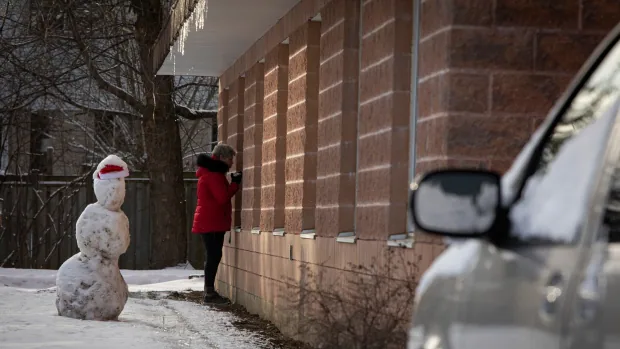Ontario long-term care homes won’t accept general visitors or allow residents to leave for social reasons starting later this week in an effort to protect residents from the highly contagious Omicron variant.
Ontario long-term care homes will halt general visits as COVID-19 outbreaks spike, fuelled by the highly transmissible Omicron variant.
Long-Term Care Minister Rod Phillips said the policy will take effect Thursday to reduce the risk of exposing vulnerable residents to the virus as it circulates in the community.
“I do understand that these measures will impact many families, but we must remain vigilant, particularly against the new Omicron variant,” Phillips told a news conference Tuesday.
Starting Thursday, only two designated caregivers per resident will be allowed to visit. All other general visits will be paused indefinitely, and residents won’t be allowed to leave for social reasons. Absences for essential reasons such as medical appointments can continue, and people can still enter the homes for palliative visits.
Philips said 41 long-term care homes were experiencing COVID-19 outbreaks as of Tuesday — up from 37 the day before, with 93 residents and 161 workers testing positive for the virus.
Factors behind the outbreaks are being investigated by local public health units, he said, noting that many had been linked to spread in the community.
Omicron has become the dominant variant in Ontario in the month since it was first detected. Infections and hospitalizations have been rising since then and several public health units have reported strain on their contact tracing and testing resources amid Omicron-fuelled case surges.
Isolation guidelines being reviewed
Ontario reported 8,825 new COVID-19 cases on Tuesday.
Health experts note that the actual case count may be much higher than reported because of holidays, and because hospitals and centres are reaching their testing limits.
Provincial Health Officer Dr. Kieran Moore is reviewing isolation guidelines for people infected with COVID-19 following changes made in the United States to cope with the high volume of Omicron infections.
Moore was set to hold a news conference about changes to testing and contact tracing guidelines, but it was postponed until later in the week.
A spokesperson for the health minister said Moore is considering Ontario-specific evidence on the shortened isolation and quarantine period guidance from the U.S. Centers for Disease Control and Prevention.
On Monday, U.S. health officials cut the recommended isolation period for Americans who catch the coronavirus to five days down from 10, and shortened the time that close contacts need to quarantine.
The agency said its guidance followed evidence that people infected with COVID-19 are most infectious in the two days before and three days after symptoms develop.
Phillips said such policy changes impacting long-term care would have to consider the “very, very vulnerable group of individuals” living in the homes.

LTC homes face staffing shortages
Staff absences from virus-related isolation requirements are “an area of concern,” though homes have been able to cope so far, he said.
“Like every other employer, LTC homes are finding that the prevalence of Omicron means that some staff are not available,” Phillips said.
The province has already reduced isolation requirements for long-term care and hospital workers who come in contact with COVID-19 in order to preserve the workforce during the Omicron wave.
Workers exposed to someone infected with the virus can now return to work immediately after receiving a negative PCR test result, as long as they remain asymptomatic. They must also take a daily rapid antigen test for the virus for the next 10 days, and a second PCR test seven days after being exposed.
A Dec. 23 memo from Long-Term Care Ministry officials said the policy can only be applied by homes “in critical staffing shortage situations.”
A vaccine mandate for the long-term care workforce also took effect on Dec. 13.
Phillips said as of last week, 84 per cent of eligible residents and 43 per cent of eligible workers had received COVID-19 vaccine booster doses, with efforts underway to get more people boosted.
The province has ramped up its third dose vaccination campaign this month, offering third shots to all eligible adults.
Premier Doug Ford toured a workplace vaccination clinic in Mississauga, Ont., where he thanked workers, volunteers and Ontarians for helping speed up the immunization drive.
He said an announcement would come “in the next couple days” about whether schools would reopen for in-person learning next week amid the high levels of community virus spread.
“We just want to see how things go and obviously speak to the chief medical officer,” Ford said.

